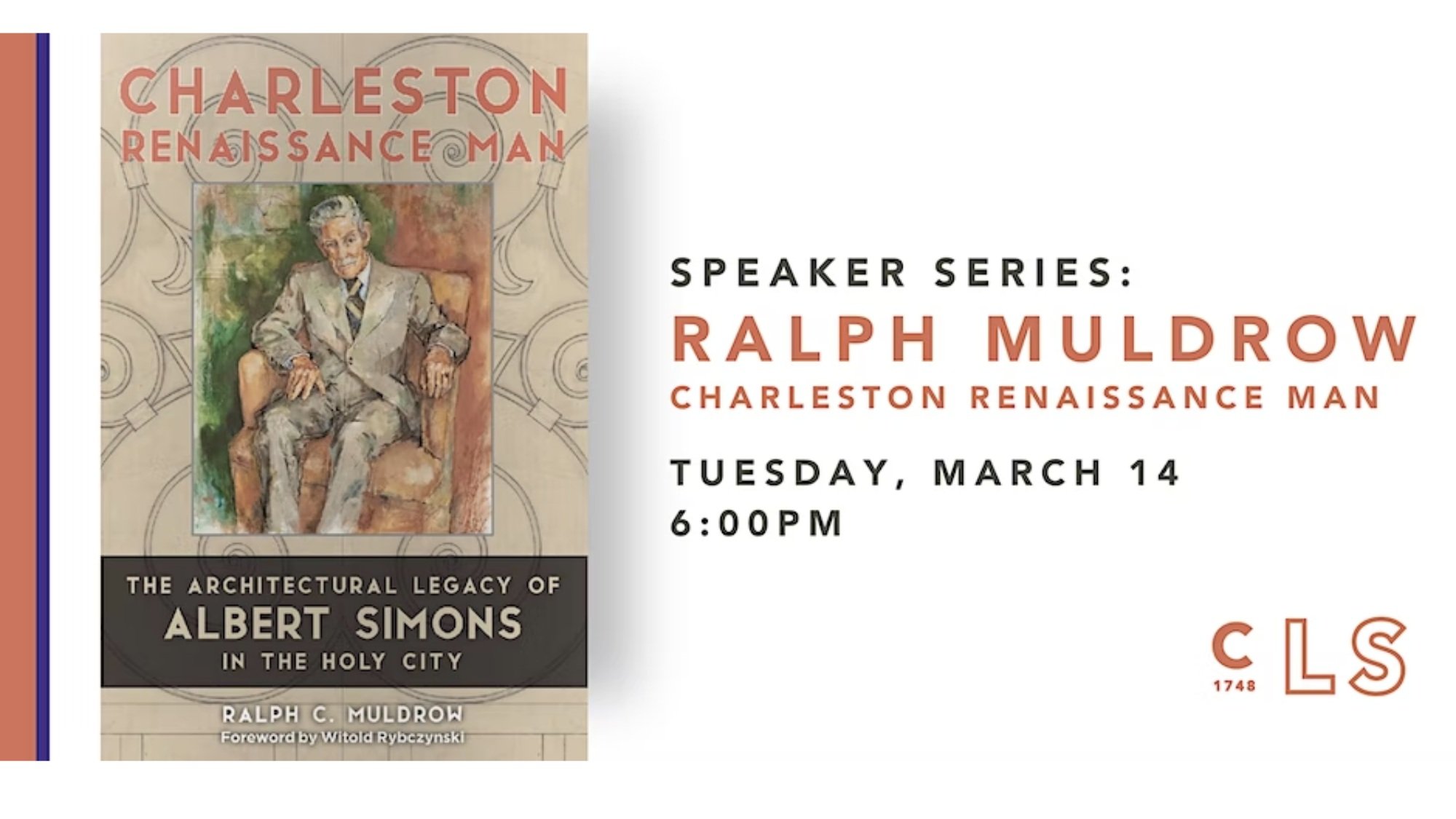Buxton Books is excited to be the bookseller at The Charleston Library Society when they host Associate Professor, Ralph C. Muldrow for an author talk on his newest release, Charleston Renaissance Man: The Architectural Legacy of Albert Simon in the Holy City. This is a ticketed event. Find tickets here!
For six decades, the renowned twentieth-century architect and preservationist Albert Simons helped shape the modern structural landscape of the Holy City. On March 14, Ralph Muldrow—whose recent book on the visionary aesthete, The Architectural Legacy of Albert Simons in the Holy City, came out in October—will join us to share insights into Simons’ legendary life and career.
About Ralph C. Muldrow:
Having trained as an architect at the University of Virginia and at the University of Pennsylvania, Simons’s alma mater, Ralph Muldrow currently serves as an Associate Professor of Architecture and Historic Preservation at the College of Charleston, where he teaches courses in design, drawing, preservation and architectural history. Muldrow also regularly teaches for the College in London, Paris, and Rome, including lessons in sketching and watercoloring. He has shown his work in Charleston and in Italy, and taught charcoal rendering at the Institute for Classical Architecture & Art in New York.
About Charleston Renaissance Man:
For six decades, the renowned twentieth-century architect and preservationist Albert Simons helped shape the modern structural landscape of the Holy City.
Simons came of age during the vibrant years of the Charleston Renaissance. His influential social circle included artists, musicians, writers, historians, and preservationists, many of whom supported the cultural revival that would transform the city. Through his architectural design and passion for preservation, Simons helped to mold the cityscape and set a course that would both preserve the Holy City and carry it forward, allowing it to become the thriving urban center it is today.
Simons brought both a sense of history and place to his work bolstered by his deep roots in Charleston, as well as a cosmopolitanism developed during his years of training at the University of Pennsylvania and travels on the European continent. The melding of those sensibilities was a perfect match for the age and made him a true Charleston Renaissance Man. While he preferred the more traditional Beaux-Arts, Classical, and Colonial Revival styles, Simons had the unique ability to balance traditional and modern styles. He believed preservation in Charleston was about retaining the city's architectural heritage, but doing so in a way that allowed the city to grow and progress—to be a living city. Looking forward and simultaneously looking back is quintessentially Charleston and a hallmark of Simons's life and work.
Featuring more than 100 color and black and white photographs and illustrations alongside compelling storytelling, Muldrow’s fascinating book reveals these deep connections between Simons and the Charleston cityscape.

